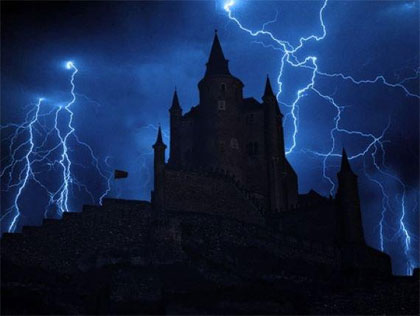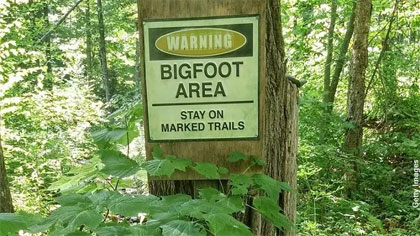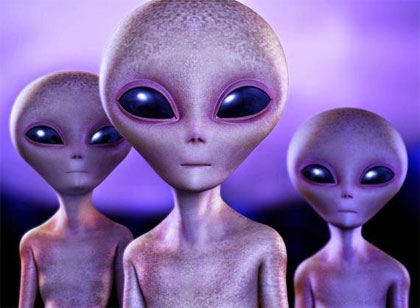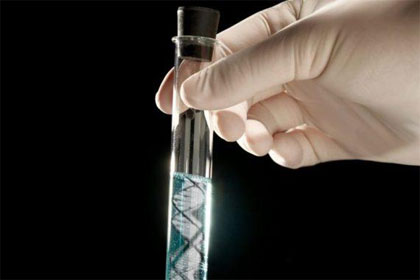By Brent Swancer
SITTING atop a hill overlooking the city of Darmstadt in the Rhine Valley within the rugged Odenwald mountain range of Germany like something out of a dark fairy tale is the real Frankenstein Castle. The name “Frankenstein” itself comes from the Franks, which was an ancient Germanic tribe, and the German word for “stone,” which is “stein,” forming the name “Stone of the Franks.” The sprawling, gothic structure was originally built in 1250 by Lord Conrad II Reiz of Breuberg, who later changed his own name to Frankenstein and started the free imperial Barony of Frankenstein. Over the years it would be expanded and change hands several times before finally becoming a refuge and a hospital, before being abandoned and falling to ruin in the 18th century. Over its many centuries the castle has accrued various spooky stories and legends, imbuing it with strange and dark lore, and it has also said to have been the inspiration for Mary Shelley’s 1818 gothic masterpiece Frankenstein.
In 1814, Mary Shelly passed by this place during a trip, and it is thought that its eerie ambiance and legends might have influenced her later work. There are certainly plenty of creepy stories to be had orbiting the place. One of the more well-known stories surrounding Frankenstein Castle is that of the man called Johann Konrad Dippel, who was born at the castle in 1673. Dippel became known as a powerful alchemist, and one of the concoctions he came up with was what he claimed to be the “elixir of life,” supposedly made from a noxious dark mixture of animal oils, crushed bones and horns, blood, leather and ivory, which allegedly could greatly expand the human lifespan and possibly allow one to live forever. He purportedly tried to use this elixir as payment for the castle at one point, which was turned down. Dippel was also rumored to do macabre secret experiments on dead bodied he stole from graveyards for the purpose of trying to bring them back to life. He was even said to have been successful, creating and abomination fashioned from corpses that he brought to life with a bolt of lightning. It is easy to see why Dippel, like the castle itself, is thought to be one of the inspirations for Mary Shelley’s Frankenstein. The monster was said to have escaped and roamed the countryside, with some saying it is still out there to this day. It is not known if this tale really influenced the author or the other way around, but it is certainly an interesting bit of lore.
 Frankenstein Castle
Frankenstein Castle
Another popular legend from here is that of a dragon that once lived in a well near the castle in the 1200s. The people of the region lived in great fear of the dragon, cowering in their homes whenever it was on the move, and this lasted for quite some time before Lord George of Frankenstein decided to take it upon himself to engage the beast in battle. The two went to battle atop a hill and according to the tale fought for hours until they were both weary from exhaustion. George was finally able to slay the dragon, but as it died it purportedly stung the valiant warrior with a poison barb and dragged him over the edge of a cliff with it as it fell. The thankful villagers then brought him to the Church of the nearby village of Nieder Beerbach, tucked away in a valley just to the east of the castle, where they buried him in a grand tomb. Whether any of this fantastical story is true in any sense or not, the tomb of Lord George exists to this day and can be visited.
Besides mad alchemists, monsters, and dragon killing warriors, there are other mysteries and tales from the castle as well. One is an area of remote forest up on nearby Mount Ilbes, in which compasses and some electric equipment won’t work due to magnetic disturbances emanating from stone formations, or perhaps paranormal forces. The lore has it that this area was frequently used by witches for dark rituals, and by some accounts still is. There is also supposedly a real fountain of youth hidden on the castle grounds, which could restore youth and vigor to even the oldest and feeblest person. There is also a vast treasure said to be buried near the castle, which has been the target of treasure hunters since the 1700s.
 Of course, what spooky castle worth its salt wouldn’t be complete without its own contingent of ghosts? There have long been said to be all manner of specters and paranormal phenomena at the castle, and it was famously investigated by the SyFy TV-Show Ghost Hunters International in 2008. The team heard anomalous noises and managed to record EVP of ghostly voices saying in Old German “Arbo is here” and “come here.” At the end of their investigation they came to the conclusion that Frankenstein Castle demonstrated “significant paranormal activity.” Frankenstein Castle is now home to one of the largest annual Halloween parties in Germany, started by American airmen at nearby Rhine-Main Air Base in 1978, and it also has modest tourist facilities year-round, including a restaurant, tours, and a wedding chapel, so go check it out. Who knows? Maybe you’ll find that treasure or the fountain of youth, and whether Shelley drew inspiration from here or not, at least you can experience the history and spooky ambiance of this imposing historical place.
Of course, what spooky castle worth its salt wouldn’t be complete without its own contingent of ghosts? There have long been said to be all manner of specters and paranormal phenomena at the castle, and it was famously investigated by the SyFy TV-Show Ghost Hunters International in 2008. The team heard anomalous noises and managed to record EVP of ghostly voices saying in Old German “Arbo is here” and “come here.” At the end of their investigation they came to the conclusion that Frankenstein Castle demonstrated “significant paranormal activity.” Frankenstein Castle is now home to one of the largest annual Halloween parties in Germany, started by American airmen at nearby Rhine-Main Air Base in 1978, and it also has modest tourist facilities year-round, including a restaurant, tours, and a wedding chapel, so go check it out. Who knows? Maybe you’ll find that treasure or the fountain of youth, and whether Shelley drew inspiration from here or not, at least you can experience the history and spooky ambiance of this imposing historical place.
MU
————
Oklahoma Bigfoot Bounty Soars to Over $2 Million for First to Capture Sasquatch
 By Tim Binnall
By Tim Binnall
AN Oklahoma lawmaker’s audacious idea to create a Sasquatch hunting season in the state has transformed into a literal Bigfoot bounty that promises over $2 million to the first person to capture the legendary creature alive. State Representative Justin Humphrey sparked worldwide headlines back in January when he introduced the controversial legislation calling for the Oklahoma Wildlife Conservation Division to issue permits for people to hunt the famed cryptid. Despite all the publicity or perhaps because of it, the bill ultimately got bogged down in bureaucracy and never made it to the Oklahoma House floor for a vote. Be that as it may, Humphrey is undeterred and has come up with a clever way to both further the concept and raise the stakes considerably.
As he explained to a local media outlet, the lawmaker learned of a legal loophole, of sorts, that would apparently allow him to bypass legislation and, instead, simply enlist the state’s tourism department to issue ‘tracking permits’ for Bigfoot under the proviso that the holder of the license understood that they were not allowed to kill or harm the creature. However, should they manage to capture a Sasquatch, the individual would stand to reap a hefty reward. According to Humphrey, his originally envisioned $25,000 prize for the creature has now ballooned to a whopping $2.1 million Bigfoot bounty thanks to pledges from a local business and a film production company.
To his credit, the lawmaker’s initial legislation expressly forbids killing a Bigfoot, but that detail was largely lost in the furor which erupted when he introduced the resolution. Be that as it may, it would appear that the matter of establishing a Bigfoot hunting season seems to have been settled as Humphrey hopes to move ahead with the plan under the auspices of the tourism office and intends to work with them to come up with specific rules for what he’s taken to calling the state’s ‘Sasquatch Quest.’ While those who do not believe in Bigfoot will undoubtedly see the lawmaker’s idea as a rather silly endeavor, if they are correct that the cryptid is not real, perhaps Humphrey ought to be doubly credited for generating what he hopes will be a significant amount of revenue for the state out of nothing but thin air.
MU
————————————————
Looking at the Alien-Human “Hybrid” Controversy
By Nick Redfern
REPORTS of so-called hybrid children and hybrid babies are particularly notable, in the sense that encounters with these somewhat unsettling creatures more often than not follow certain, distinct pathways that crop up time and again. There is, for example, most assuredly a greater percentage of female abductees who have had interactions with the hybrids than there are male abductees. There appears to be a very good reason for this. Under hypnotic regression, numerous women have reported been taken on board a UFO, or, on more than a few occasions, to an underground installation, where they are introduced to the hybrids. Of course, the underground component/”little people” issue adds to the centuries-old fairy encounters, and the changeling phenomenon that has its undeniable parallels to today’s UFO scene. In such situations the woman will either be laying on something akin to an operating-room table, or sitting in a chair that resembles a dentist’s chair. It’s then that something remarkable happens – although, admittedly, others might call it terrifying.
As the abductee looks on, a group of three or four small, alien Grays will approach, with one of them holding in their hands a tiny baby that is clear not entirely human, even though it exhibit certain, physical, human traits. The abductee is then encouraged to take the baby from the Gray and to cradle it. Researchers of the phenomenon have suggested, probably correctly, that this procedure is undertaken to try and instill an emotional bond between the abductee and the hybrid. If this all sounds very calm and tranquil, it often is not. Many of the female abductees who report this bonding process – or attempt at bonding – were, months earlier, pregnant themselves. For a while, at least, they were. There are many reports on record where a pregnant abductee has experienced a sudden, unexplained miscarriage; a tragic event, to be sure. Or is there just an assumption they were miscarriages? Quite possibly, yes.
 Those same abductees, when presented with a hybrid baby, develop sudden, unexplained suspicions that what they are being shown is the baby they were once carrying and which they assumed had miscarried. In this scenario, abduction researcher suggest, the abductees are impregnated during an earlier abduction, they then carry the fetus for a number of months, and then it is removed from the mother during a later abduction, and essentially “grown” in what we might call an artificial womb. A sensation – some might say outrageous – scenario, to be sure, but it’s not a possibility that can be dismissed. The reason why is as amazing as it is controversial: we, the Human Race, are now working – and working hard and fast – to develop artificial wombs.
Those same abductees, when presented with a hybrid baby, develop sudden, unexplained suspicions that what they are being shown is the baby they were once carrying and which they assumed had miscarried. In this scenario, abduction researcher suggest, the abductees are impregnated during an earlier abduction, they then carry the fetus for a number of months, and then it is removed from the mother during a later abduction, and essentially “grown” in what we might call an artificial womb. A sensation – some might say outrageous – scenario, to be sure, but it’s not a possibility that can be dismissed. The reason why is as amazing as it is controversial: we, the Human Race, are now working – and working hard and fast – to develop artificial wombs.
The process of growing a fetus, and bringing it to full term in an artificial womb, is called ectogenesis. Much of the research is still at a theoretical stage, predominantly because of restrictions and regulations that govern the ethical, or non-ethical use, of human embryos in experimentation. But, not all of it is. As just two perfect examples, we have to first turn our attentions to Japan, and experimentation undertaken in 1997, at the Bunkyo, Tokyo-based Juntendo University. The program was led by Yoshinori Kuwabara – the Chairman of the Department of Obstetrics at the university – who was successful in growing goat embryos that were contained in a machine filled with amniotic fluid, a yellow-colored fluid contained in the amniotic sac and which surrounds the growing fetus. Then there is the work of Cornell University’s Reproductive Endocrine Laboratory. In both 2003 and 2011 significant success was had by sustaining embryos in artificial wombs. In the 2003 experiment, the embryo was that of a mouse. Eight years later, however, it was nothing less than a human embryo, which was allowed to develop for ten days – with fourteen days being the absolute, legal time-limit on experimenting with human fetuses.
 There is, however, one potential disadvantage, and it may prove to be a big one, should we, as a species, ever decide to go down this emotionless pathway. It is the matter of the deep bonding between the mother and the unborn fetus that quickly develops when pregnancy begins. Or, in the future, what might very well be a distinct lack of that bonding. Might we see a 23rd Century or a 28th Century in which, as a result of a factory-like environment in which babies are grown to order, specification, and design, that bond is completely lost? Might we see the Human Race, hundreds of years from now, reduced to nothing but cold, emotionless entities – in fact, just like the Grays – that will have no understanding of, or care for, the emotional angle of what it means to be pregnant? Such a thing, given that research in this field is pressing ahead, is not at all out of the question. This same situation may also explain why the Grays are forced to present hybrid children to human mothers, in an effort to induce bonding: the Grays are utterly incapable of comprehending how to make that bond themselves.
There is, however, one potential disadvantage, and it may prove to be a big one, should we, as a species, ever decide to go down this emotionless pathway. It is the matter of the deep bonding between the mother and the unborn fetus that quickly develops when pregnancy begins. Or, in the future, what might very well be a distinct lack of that bonding. Might we see a 23rd Century or a 28th Century in which, as a result of a factory-like environment in which babies are grown to order, specification, and design, that bond is completely lost? Might we see the Human Race, hundreds of years from now, reduced to nothing but cold, emotionless entities – in fact, just like the Grays – that will have no understanding of, or care for, the emotional angle of what it means to be pregnant? Such a thing, given that research in this field is pressing ahead, is not at all out of the question. This same situation may also explain why the Grays are forced to present hybrid children to human mothers, in an effort to induce bonding: the Grays are utterly incapable of comprehending how to make that bond themselves.
We may one day grow babies outside the womb, but there are many things t…
Evie Kendal
Yes, there are pros and cons of this new reproductive technology. But there are many other issues about maternal…
MU
